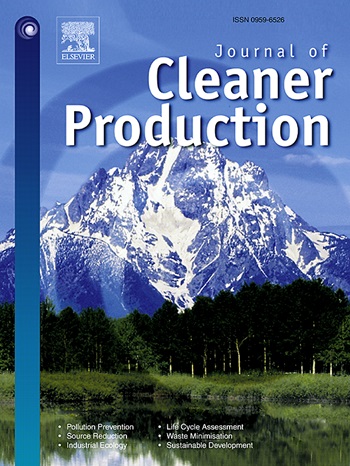Making better Bugs: Improving black soldier fly production for a more sustainable future
IF 9.7
1区 环境科学与生态学
Q1 ENGINEERING, ENVIRONMENTAL
引用次数: 0
Abstract
Our research leverages sustainable inputs to enhance production efficiency and minimize the ecological footprint of insect production for food and feed, focusing on eco-friendly alternatives and a commitment to reducing environmental impact. This study highlights the potential of Black Soldier Fly (Hermetia illucens) farming in sustainable agriculture. The analysis of large-scale H. illucens larvae production involved two main steps: (1) analysing industry production data and (2) creating an LCA model in SimaPro for impact analysis. Using Life Cycle Assessment (LCA) and different impact assessment methodologies - such as IMPACT 2002+, IPCC 2021, Environmental Footprint 3.1, and AWARE - we examined environmental impacts concerning climate change, water use, and land use. The system boundary included raw material extraction, processing, transportation, and disposal phases, using 1 kg of dry insect matter as the functional unit. Results indicated significant impact reductions with updated production systems compared to older ones when renewable energy sources were used, insect genetics were improved, and larval nutrition was optimized. Compared to the old Protix production system, the updated system resulted in a reduction in carbon emissions by 50 % for frass-based fertilizers (0.01 kg CO2 eq), 30 % for fresh insect production (0.28 kg CO2 eq), 30 % for Hermetia puree (0.31 kg CO2 eq), 48 % for fat (0.47 kg CO2 eq), and 29 % for meal (0.82 kg CO2 eq). Additionally, the transition led to an average land use reduction of 100 % across all Protix products. Incorporating gray starch in feed cut carbon emissions by 0.24 kg CO2 eq, although oat husk meal and transportation still contributed a high proportion of impacts. Wind energy use achieved a remarkable reduction in carbon emissions across products. In conclusion, sustainable feed and renewable energy were the factors affecting the reduction of environmental impact, offering pathways for efficient insect production.


制造更好的虫子:提高黑兵苍蝇的产量,以实现更可持续的未来
我们的研究利用可持续投入来提高生产效率,最大限度地减少昆虫生产食品和饲料的生态足迹,重点关注环保替代品,并致力于减少对环境的影响。这项研究强调了黑兵蝇(Hermetia illucens)养殖在可持续农业中的潜力。对黄纹夜蛾幼虫大规模生产的分析包括两个主要步骤:(1)分析行业生产数据;(2)在SimaPro中创建LCA模型进行影响分析。利用生命周期评估(LCA)和不同的影响评估方法——如impact 2002+、IPCC 2021、环境足迹3.1和AWARE——我们研究了气候变化、水利用和土地利用对环境的影响。系统边界包括原料提取、加工、运输和处置阶段,以1 kg干虫物质为功能单位。结果表明,与旧的生产系统相比,更新的生产系统在使用可再生能源、改进昆虫遗传和优化幼虫营养方面显著减少了影响。与旧的Protix生产系统相比,更新后的系统使草肥(0.01 kg CO2当量)的碳排放量减少了50%,新鲜昆虫(0.28 kg CO2当量)的碳排放量减少了30%,Hermetia果泥(0.31 kg CO2当量)的碳排放量减少了30%,脂肪(0.47 kg CO2当量)的碳排放量减少了48%,饲料(0.82 kg CO2当量)的碳排放量减少了29%。此外,这一转变使所有Protix产品的平均土地使用量减少了100%。在饲料中添加灰色淀粉减少了0.24 kg CO2当量的碳排放,尽管燕麦壳粉和运输仍然贡献了很大比例的影响。风能的使用大大减少了产品的碳排放。综上所述,可持续饲料和可再生能源是减少环境影响的因素,为昆虫高效生产提供了途径。
本文章由计算机程序翻译,如有差异,请以英文原文为准。
求助全文
约1分钟内获得全文
求助全文
来源期刊

Journal of Cleaner Production
环境科学-工程:环境
CiteScore
20.40
自引率
9.00%
发文量
4720
审稿时长
111 days
期刊介绍:
The Journal of Cleaner Production is an international, transdisciplinary journal that addresses and discusses theoretical and practical Cleaner Production, Environmental, and Sustainability issues. It aims to help societies become more sustainable by focusing on the concept of 'Cleaner Production', which aims at preventing waste production and increasing efficiencies in energy, water, resources, and human capital use. The journal serves as a platform for corporations, governments, education institutions, regions, and societies to engage in discussions and research related to Cleaner Production, environmental, and sustainability practices.
 求助内容:
求助内容: 应助结果提醒方式:
应助结果提醒方式:


